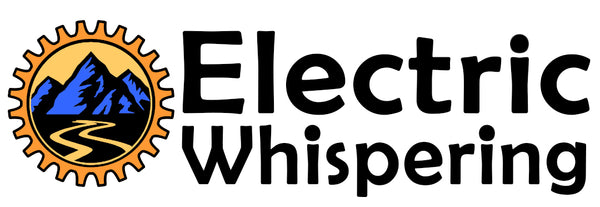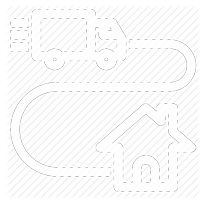Let’s face it—daily commuting can be a grind. Between rising gas prices, unpredictable public transit, and soul-crushing traffic, many professionals are fed up. But what if your commute could be quicker, cheaper, and even enjoyable?
That’s exactly what electric bike commuters are discovering. More urban riders are swapping their cars and train passes for e-bikes—and finding that they’re not just a good alternative, they’re often the better way to get to work.
In this guide, we’ll break down why commuting by e-bike is gaining momentum, how it can save you time and money, and what to know before making the switch.
1. Why More Commuters Are Choosing Electric Bikes
E-bikes are no longer just for hobbyists or weekend riders. They’re becoming a go-to solution for professionals looking to reclaim time, health, and money from their daily routine.
Here's why the shift is happening:
-
Traffic relief: Glide past gridlock using bike lanes and alternate routes.
-
No parking stress: Lock your e-bike right outside the office or bring it inside.
-
Control over your schedule: No more waiting on trains or buses—just ride.
-
No sweat: Pedal-assist lets you arrive energized, not exhausted.
For many, the e-bike commute adds a burst of independence and movement into the day—without the stress of traditional transportation.
2. Real Savings: The Financial Benefits Add Up Fast
Commuting by e-bike isn’t just practical—it’s cost-effective. Most buyers are surprised how quickly the investment pays off when compared to a car or monthly transit pass.
Let's compare:
-
E-Bike upfront cost: $1,200–$2,500 (often with financing options)
-
Charging cost: Around $0.10–$0.25 per full charge
-
Maintenance: Basic upkeep and occasional brake or tire service
-
Parking: Free (or non-existent)
Now compare that to:
-
Gas, insurance, and maintenance on a car
-
Transit passes that keep rising in cost
Over 6–12 months, many commuters save hundreds—or thousands—of dollars, while gaining a new level of freedom.
3. Time Wins: Beat the Clock and Enjoy the Ride
In cities with growing bike lane networks, e-bikes often beat cars and buses in door-to-door commute time. Why? Because they eliminate the worst parts of city travel: sitting in traffic, circling for parking, and waiting on late trains.
Consider this:
-
A 5–10 mile commute that takes 40 minutes by car in traffic may take just 25–30 minutes on an e-bike.
-
Your route is flexible—you can bypass congested streets and explore quieter side paths.
-
You’re moving the whole time—no stops, no delays, no detours.
Arrive on time. Ride with control. And maybe even take the scenic route once in a while.
4. Fitness Without the Burnout
Worried about sweating through your shirt or arriving drained? Don’t be. E-bikes are built to make commuting easier, not harder.
Pedal-assist levels let you dial in the exact amount of effort you want to put in. Want a light workout on the way home? Use a low assist. Got a big meeting in the morning? Crank up the power and cruise.
You choose your pace, and the motor supports you.
Over time, many commuters find they become more active, consistent riders than they ever were with a traditional bike—because it’s enjoyable, not exhausting.
5. You Don’t Need to Be a “Bike Person”
One of the best things about commuting by e-bike is that you don’t need to be a hardcore cyclist. You don’t need to wear spandex or understand gear ratios. You just need a reliable e-bike and a basic understanding of your commute route.
E-bikes open the door to riding for people who:
-
Haven’t biked in years
-
Are intimidated by distance or hills
-
Want a healthy habit without the high barrier to entry
-
Value practicality over performance
If you can ride a bike, you can ride an e-bike. No experience necessary.
6. What to Look For in a Commuter E-Bike
Not all e-bikes are built the same. If you’re commuting, here are the features that matter most:
Key Commuter Features:
-
Step-through frame (for easy on/off in work clothes)
-
750W motor (for power and speed in traffic)
-
Rear rack or basket (for bags, laptop, or groceries)
-
Fenders (for splash protection on wet roads)
-
Integrated lights (front and rear for safety)
-
LCD display (to track speed, battery, and assist level)
Fat tires can be a bonus for comfort and stability, especially on bumpy city roads or occasional off-pavement paths.
7. What You’ll Need to Get Started
Aside from the e-bike itself, your commute setup can be as simple or as dialed-in as you want. Start with the basics:
-
Helmet – Safety first.
-
Lock – A strong U-lock or folding lock is worth the investment.
-
Panniers or backpack – Carry your essentials comfortably.
-
Rain gear – Optional, but great for all-weather riders.
Once you’re set up, you’ll find that most days, it’s grab-and-go—just like hopping in a car, but better.
Final Thoughts: More Freedom, Less Friction
Commuting doesn’t have to be something you dread. An electric bike turns the trip into something smoother, cheaper, and often more joyful than you imagined.
You save money. You skip traffic. You stay active. And best of all, you take back control of your day.
At Electric Whispering, we help riders of all levels find the right commuter e-bike with honest advice and personal support. No pressure, no gimmicks—just fast shipping, flexible financing, and bikes that work for real life.
Ready to Change the Way You Commute?
Explore our top-rated commuter e-bikes and see how easy it can be to upgrade your ride—and your routine.





